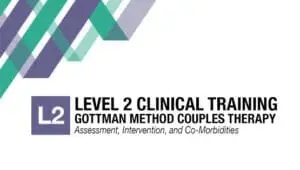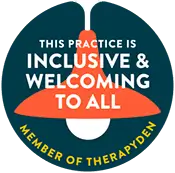Are you tired of hearing the term “codependency” thrown around in relationships? Are you wondering if it’s just another buzzword for toxic dynamics? Well, get ready to have your mind blown as we debunk the codependency myth! In this article, we will unravel the truth behind relationship dynamics and help you understand what’s really going on.
Contrary to popular belief, codependency is not the root cause of all relationship problems. It’s a complex concept that has been oversimplified and distorted over time. It’s time to set the record straight and uncover the real issues at play.
Using extensive research and expert insights, we will explore the different aspects of relationship dynamics, including communication patterns, power imbalances, and emotional dependency. We’ll provide you with practical tips and strategies to develop healthier relationships and break free from harmful patterns.
Don’t let misconceptions about codependency cloud your judgment. Join us as we delve deep into the truth and gain a fresh perspective on relationship dynamics. Get ready for a paradigm shift that will transform the way you think about your interactions with others.
Understanding healthy relationship dynamics
The term “codependency” was first introduced in the 1980s to describe relationships characterized by excessive reliance on one another. Over time, however, it has become a catch-all phrase that is often misused and misunderstood. Many people believe that codependency is the root cause of all relationship problems, but this oversimplification fails to address the complexities of human connections.
In reality, relationship dynamics are influenced by a multitude of factors, including upbringing, societal norms, and individual personalities. While codependency can be a contributing factor in some cases, it is not the sole determinant of relationship health. By understanding the origins of the codependency myth, we can begin to see the bigger picture and gain a more nuanced perspective.
Common misconceptions about codependency
To truly understand relationship dynamics, we must first define what a healthy relationship looks like. Healthy relationships are built on mutual respect, trust, and open communication. Both partners feel secure and supported, as they are able to maintain their individuality while also fostering a deep connection.
In healthy relationships, power is shared equally, and decisions are made collaboratively. Each partner has a sense of autonomy and freedom, and they support each other’s personal growth and aspirations. Conflict is approached with empathy and a willingness to find a resolution that benefits both parties.
It’s important to note that healthy relationships are not devoid of challenges or disagreements. However, the difference lies in how these challenges are addressed and resolved. Healthy relationship dynamics allow for growth, compromise, and the development of a strong emotional bond.
Signs of a healthy relationship
One of the biggest misconceptions about codependency is that it always involves one partner being overly dependent on the other. While this can be a characteristic of codependent relationships, it is not the defining factor. Codependency is more accurately described as a pattern of behaviors and beliefs that perpetuate unhealthy dynamics.
Another misconception is that codependency only occurs in romantic relationships. In reality, codependency can manifest in any type of relationship, including friendships, family relationships, and even professional settings. It is not limited to romantic partnerships alone.
It’s important to dispel these misconceptions in order to gain a better understanding of relationship dynamics. By recognizing that codependency is not the sole determinant of relationship health, we can begin to explore other factors that contribute to both healthy and unhealthy dynamics.
Recognizing unhealthy relationship patterns
Now that we’ve debunked some of the myths surrounding codependency let’s take a closer look at the signs of a healthy relationship. These signs can serve as a guide to help you assess the health of your own relationships and make necessary adjustments.
1. Open and honest communication: In a healthy relationship, both partners feel comfortable expressing their thoughts, feelings, and needs. They actively listen to each other and strive to understand one another’s perspectives.
2. Respect and equality: Healthy relationships are built on a foundation of respect and equality. Both partners value each other’s opinions, boundaries, and autonomy. Power is shared, and decisions are made together.
3. Support and encouragement: Healthy relationships are characterized by support and encouragement. Each partner uplifts and motivates the other to pursue their goals and dreams. Emotional support is provided during both triumphs and setbacks.
4. Trust and loyalty: Trust forms the bedrock of a healthy relationship. Both partners feel secure in the knowledge that they can rely on each other and that their fidelity will not be compromised.
5. Individuality and independence: Healthy relationships allow for individuality and independence. Each partner maintains their own hobbies, interests, and social circles, which helps foster personal growth and prevents a sense of suffocation.
Codependency vs. interdependence
While healthy relationships are characterized by the signs mentioned earlier, unhealthy relationships exhibit patterns that can be detrimental to both individuals involved. It’s important to recognize these patterns in order to address them and work towards healthier dynamics.
1. Lack of communication: In unhealthy relationships, communication is often lacking or ineffective. Issues are left unresolved, leading to resentment and further deterioration of the relationship.
2. Power imbalances: Unhealthy relationships are often characterized by power imbalances, where one partner exerts control over the other. This can lead to feelings of helplessness, diminished self-esteem, and a loss of personal autonomy.
3. Emotional manipulation: Emotional manipulation is a common feature of unhealthy relationships. One partner may use guilt, fear, or other tactics to manipulate and control the other person’s actions and emotions.
4. Codependency: While codependency is not the root cause of all relationship problems, it can be a contributing factor in unhealthy dynamics. Codependent relationships are often characterized by excessive reliance on one another, leading to an unhealthy interconnectedness that hinders personal growth.
5. Lack of trust: Unhealthy relationships are plagued by a lack of trust. Whether it’s due to past betrayals or ongoing dishonesty, the absence of trust erodes the foundation of the relationship and creates an atmosphere of suspicion and doubt.
Overcoming codependency
It’s essential to distinguish between codependency and interdependence, as they represent two contrasting relationship dynamics. While codependency is characterized by unhealthy reliance on one another, interdependence promotes a healthy balance of autonomy and connection.
Interdependent relationships involve partners who are able to maintain their independence while also fostering a deep emotional bond. They rely on each other for support and care, but they also respect each other’s boundaries and individuality.
In interdependent relationships, both partners are able to function independently and have a strong sense of self. They have their own interests, goals, and support networks, which allows for personal growth and a healthy exchange of ideas and perspectives.
Seeking professional help for codependency
If you find yourself in a codependent relationship, it’s important to take steps toward breaking free from harmful patterns. Overcoming codependency requires self-reflection, self-care, and a commitment to personal growth. Here are some strategies to help you on your journey:
1. Self-awareness: Start by developing a deeper understanding of your own needs, desires, and boundaries. Explore your own identity and interests outside of the relationship.
2. Seek support: Reach out to trusted friends, family members, or professionals who can provide guidance and support. Join support groups or therapy sessions specifically tailored to codependency.
3. Set boundaries: Establish clear boundaries and communicate them to your partner. Practice saying no and prioritizing your own well-being.
4. Build self-esteem: Work on building your self-esteem and self-worth. Engage in activities that make you feel good about yourself and surround yourself with positive influences.
5. Develop independence: Cultivate your own interests, hobbies, and social connections. Focus on personal growth and developing a strong sense of self outside of the relationship.
Conclusion: Embracing healthy relationship dynamics
While self-help strategies can be effective, seeking professional help is often beneficial in overcoming codependency. Therapists and counselors who specialize in codependency can provide tailored guidance and support to help you navigate the complexities of your relationship dynamics.
Professional help can provide a safe and non-judgmental space for you to explore your emotions, gain insights into your behavior patterns, and develop healthier coping mechanisms. Therapy can also help you address any underlying issues that may be contributing to your codependency.
Remember, seeking professional help is a sign of strength and a commitment to personal growth. It’s an investment in your well-being and the health of your relationships.







